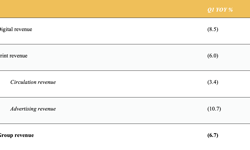Delivering content online presents clear opportunities for publishers to reduce operational costs and generate an increasing return from a mix of revenue streams. Indeed, we considered how best to monetise online content in a previous article, which, overall, presented a positive outlook for online publishing. Since writing that, we now find ourselves in the midst of a confirmed recession. Yet, that doesn’t change our view that publishers can still achieve success in challenging times. However, it does make the following ideas all the more relevant. It’s increasingly important to focus on optimising the resources available, to make your content work harder, and to refine processes to attract, convert, and retain customers.
We have recently been conducting research with over 100 respondents, from a range of publishers, to gauge opinion and insights on how different businesses are addressing the challenges and opportunities to be faced in different sectors. We have also held ‘conversion clinic’ workshops with a number of publishers. Our findings, along with a review of wider industry research, have guided the following views and recommendations.
During a downturn, it’s essential to market intelligently, optimise all operational processes, aggressively measure return on investment, and be as nimble and responsive as possible; reacting when changes are required. The ideas discussed here are not necessarily new or ground breaking but consist of proven best practice and ‘quick wins’ that we feel can be cost-effectively implemented for a successful online publishing strategy.
Measure, Test, & Optimise
Before looking at specific tactics for attraction, conversion, and retention, it’s worth highlighting the importance of grounding all online developments with best practice performance measurement and testing. A key advantage of delivering content online is that everything is easily measurable with the effective use of web analytics tools and reporting. Optimisation of pages and processes is fundamental for site owners looking to improve usability and maximise conversions. Furthermore, there are opportunities for ongoing testing with minimal administrative overhead, with a content managed website and use of (free) analytics and testing tools.
The majority of our research respondents already use a web analytics service, with 68% using Google Analytics. However, despite the clear advantages of rigorous testing, surprisingly only a fifth of respondents (21%) have undertaken A-B split or multivariate testing to date (tinyurl.com/5e3c66). A combination of incremental changes can have an enormous tangible benefit and reporting on the key performance indicators (KPIs), of most relevance for your business model, will help identify the most effective updates. Don’t underestimate the importance of continued testing to optimise landing pages and increase conversions. A policy of ‘value-driven development’ underpinned by structured hypothesis, testing, and reporting can justify budget and resource for any additional web developments, or flag which tactics to drop.
Attraction
During a recession, a cost-effective marketing strategy needs to bring visitors to the website who are most likely to convert. Managing an effective integrated marketing strategy should drive targeted traffic to optimised landing pages. SEO best practice, link-building, and content syndication, are all integral to achieving this. It’s also worth noting that marketing campaigns should be appropriate to the type of content you are trying to attract visitors to, achieving a suitable balance for short and longer term strategies and optimal cost per acquisition. Time sensitive premium content may require quick results through paid ad campaigns, over and above SEO.
Positioning yourself to capture traffic from ‘breakout’ searches should form part of your content strategy. Fish where the fish are and focus on ‘long tail’ targeted search terms. Keyword analysis, capturing inbound search terms, and internal site search can be reported back to the editorial team. Free tools such as Google Trends and Google Insights can provide a useful guide to editorial for a responsive content strategy (Techcrunch, tinyurl.com/3p7npz).
Social media marketing can be very effective, and to capture traffic for current issues you need to look beyond traditional search marketing to platforms such as Facebook Connect, and Twitter (Readwriteweb, tinyurl.com/7xdbn2, iCrossing, tinyurl.com/95aha5). The rise of social will increasingly affect publishers as their audiences share feeds and congregate on social media sites (eg. LinkedIn groups tinyurl.com/avrntk). A number of publishers are already driving targeted traffic from Twitter, reportedly the fourth biggest referrer for Econsultancy (tinyurl.com/awduda). When incorporating social media, it’s essential to recognise it’s a platform for engaging in conversation rather than blanket advertising messages.
By increasing exposure to content, the chance of conversion increases. It is therefore important not to hide too much behind a subscriber wall but to free up some content and reuse legacy content as a foundation for audience development. This is equally important in exposing content to search engines as well as site users. For websites with a depth of content, the majority of visitors land on deep linked pages, rather than the homepage. It’s vital to clearly signpost recent, related, premium content, and calls-to-action, above the fold, to increase time on site and conversions.
Aggregating third party content can help further increase the depth of content, with minimal editorial overhead, and establish the website as an authority destination site (Publishing 2, tinyurl.com/64qnmx). For SEO and brand building, we also recommend developing relationships with trusted bloggers; provide RSS widgets for them to embed your dynamically updated content. The significance of an effective syndication strategy was aptly described by Amanda Watlington as "...a turbo-charger for increasing content consumption, reach and engagement..." (InPublishing, Jan/Feb 2009).
Social media, content syndication, and aggregation, present cost-effective and rewarding marketing opportunities worth experimenting with. However, most of the publishers we contacted were not yet pursuing these tactics with 42% publishing RSS feeds, but only 18% engaging with social media platforms, and only 12% aggregating third party content.
Conversion
A cost-effective marketing strategy to attract quality targeted traffic is only part of the equation. It’s crucial to remember it’s not just a simple numbers game where success inevitably follows increased visitor levels. The bottom line, as always, is to maximise conversions. During a recession, it’s important to move resources closer to the deal focussing on sales enablement; for your web strategy this means, for example, optimising landing pages. Furthermore, a longer sales cycle requires lead-nurturing techniques, such as free trials, to engage users and help move prospects closer to purchasing.
Interestingly, our research showed that a significant number of publishers who deliver premium content online did not currently offer trials (45%). However, we would stress the value of engaging new users with a trial in increasing subsequent subscription levels. Sponsored trials (eg. as run by the Economist) can also have a dual benefit both from the advertising revenue, but also from a strong brand association. It’s also worth noting that for some users, for example those invoicing their end client, a pay-per-view model is preferable and can generate more revenue, something Econsultancy have enjoyed success with as mentioned by Ashley Friedlein speaking at a recent SIPA event.
Sign-up pages should clearly articulate the benefits and value proposition - use A-B split or multivariate testing to find the most effective design and messaging. User status based calls-to-action should dynamically display only relevant messages for new users, trialists, or subscribers. Trust messaging such as displaying secure payment trademarks, and making contact details clearly visible, will also help minimise ‘checkout abandonment’. Testimonials can also help establish trust and credibility. We advocate experimenting with different combinations of banner style calls-to-action, and long copy text links, to combat ‘banner blindness’ (Jakob Nielsen, tinyurl.com/yux7a6).
Sign-up success pages and confirmation emails should re-iterate the benefits of the subsequent subscription options and related products. Automated email efforts should help to bring trialists back to the site and convert to a subscription. Trialists returning to the site should be reminded of their trial status. Making community features, such as forums, only available to trialists or subscribers will help increase conversions when their access period ends and they already have an attachment. It can also be effective to keep some high value features restricted from trialists as an incentive to convert to a full subscription.
Retention
It’s more challenging to acquire new customers in a downturn, so it’s important to pay attention to the ones you do have, and focus on customer retention. As Michael Upshall suggested in the Nov/Dec 2008 issue of this magazine, it is worth adding value by enhancing the experience of existing customers and site users, instead of purely focussing on looking for new visitors. It’s essential to attract returning visitors and to increase ‘site stickiness’ to maximise exposure to content and opportunities for cross and up-sell conversions and renewals.
Reporting on active and passive users is useful for the marketing team to focus on those most likely to convert. Reporting and blacklisting serial trialists and users sharing an individual subscription also helps increase conversions, and identify suitable targets for a site license. It’s worth noting that one of the benefits of a group subscription is longer customer lifetimes, so efforts to boost group subscriptions make sense during an economic downturn.
Providing new features that add value to users such as business directories, job boards, forums, webcasts etc..., can help customer retention as well as providing a mix of additional revenue streams. In particular, many of our research respondents (58%) have already implemented community features in an attempt to keep visitors coming back and spending longer on the site. This finding is in keeping with Lynne Anderson’s suggestion that this year publishers will be focussing on tactics to become the central hub for local community networking in their areas (InPublishing, Nov/Dec 2008).
Personalisation and customer segmentation also help to add value in delivering targeted content. Through capturing explicit preferences (from profile settings), and implicit interests (from searches and page views), it is possible to deliver personalised content that adds value and provides an engaging user experience. Despite the clear benefits, of the publishers we’ve contacted, only 34% were delivering any personalisation in their email broadcasts, and only 10% delivering personalised website content to their registered users.
Conclusions
The suggestions above present just a few ideas that are straightforward to implement with minimal expense or resource dependency. The challenges of an economic downturn demand further strategy review and bring into focus the significance of optimisation and testing. There are clear opportunities online for cost-effective content distribution and a mix of revenue streams to take advantage of. The current economic climate should force publishers to fully embrace these opportunities, to innovate, and find improved operational efficiencies that may not have been adopted otherwise. The news that Google has bought a failing paper mill to use as a data centre serves as a reminder of the decline of print and the rise of the web (Techcrunch, tinyurl.com/dclmsk).
An interesting recent post by Steve Outing discusses the potential merits of a ‘voluntary pay model’ through a new outfit, Kachingle, where web users can easily make contributions to support the publishing sites they visit (Steve Outing, tinyurl.com/cpgsap). For some, it may indeed be the case that such a paradigm shift is required, but for others, it may rather be a case of adopting best practice online strategies to make the most of what you have, attract more targeted traffic to optimised landing pages, increase conversions, leverage existing customers, and pursue a mix of revenue streams to ensure commercial success during challenging times.
All our respondents indicated that they are reviewing systems and processes to identify cost savings but it was evident that there are a range of straightforward tactics that can prove particularly useful in helping reduce operational costs and increase revenues. It’s important to have the tools in place to be able to easily test landing pages, and to experiment with the above tactics as well as the overall model for content access. It is important to embrace a process of continued testing and optimisation to find the most effective solutions that work for you.
FEATURE
Recession Busting Tactics For Online Publishers
Perhaps the only good thing you can say about a recession is that it forces us to work smarter. The unrelenting focus on costs leads us to re-examine the way we do things and we strain every sinew to make our marketing budget stretch further. Angus Phillipson looks at some ‘quick win’ measures to help us through this downturn.










